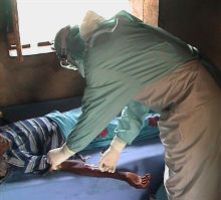 Enhancing infection prevention and control practices is a tool for promoting safer health care. Photo credit: WHOInfection prevention and control measures aim to ensure the protection of those who might be vulnerable to acquiring an infection both in the general community and while receiving care due to health problems, in a range of settings.
Enhancing infection prevention and control practices is a tool for promoting safer health care. Photo credit: WHOInfection prevention and control measures aim to ensure the protection of those who might be vulnerable to acquiring an infection both in the general community and while receiving care due to health problems, in a range of settings.
Health care Associated Infections (HAIs) are considered the most frequent adverse events that threaten patient safety around the world. Around 5% to 15% of patients admitted to acute care hospitals in developed countries acquire health care associated infections at any given time. The risk of acquiring infection is 2 to 20 times higher in developing countries.
The WHO Eastern Mediterranean Region has one of the highest frequencies of HAIs in the world. The prevalence of HAIs in several countries in the Region is reported to vary from 12% to 18%. The burden of transmissible infections among health care workers due to unsafe health care practices is also considerably high in the Region. Although a substantial proportion of infections and deaths attributable to HAIs can be prevented and low cost interventions for infection prevention and control are available, progress in this field remains slow.




